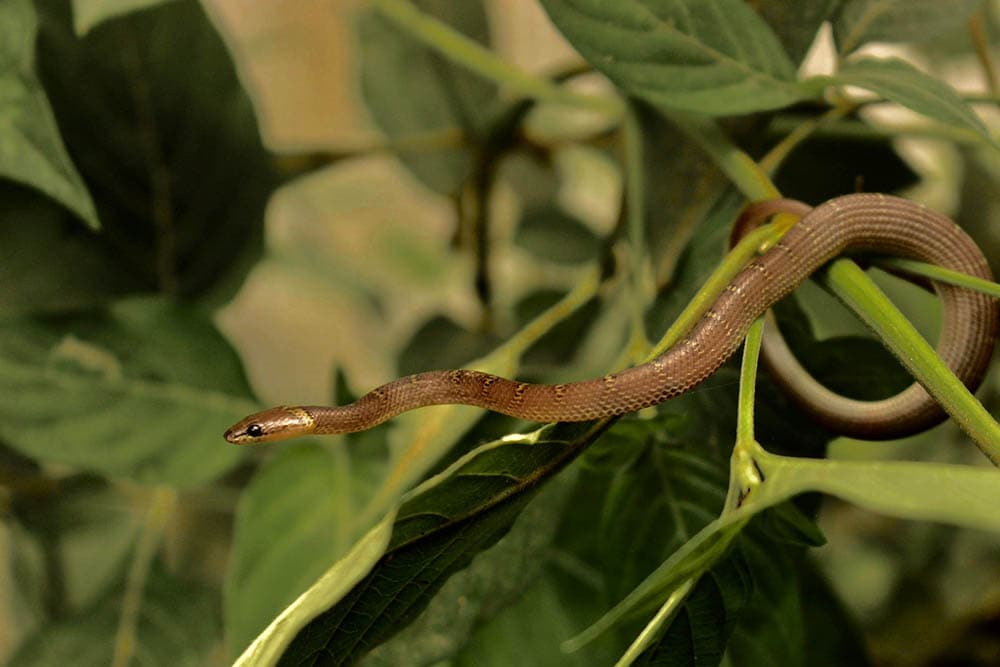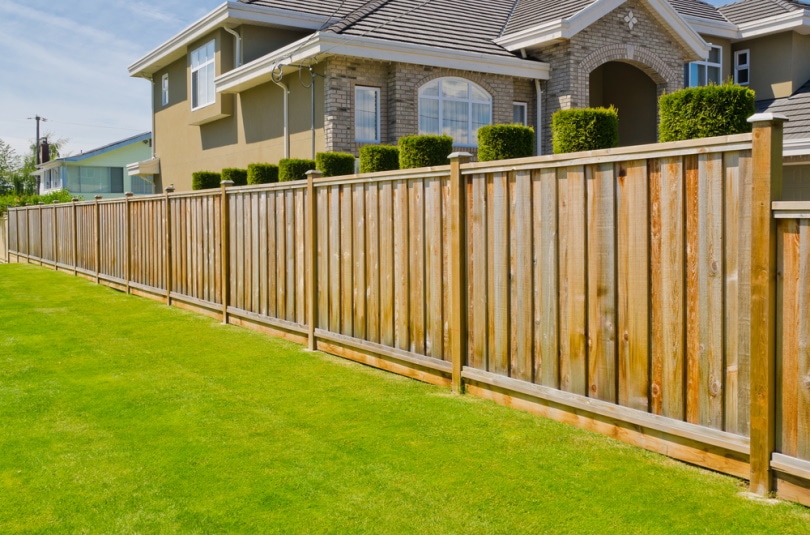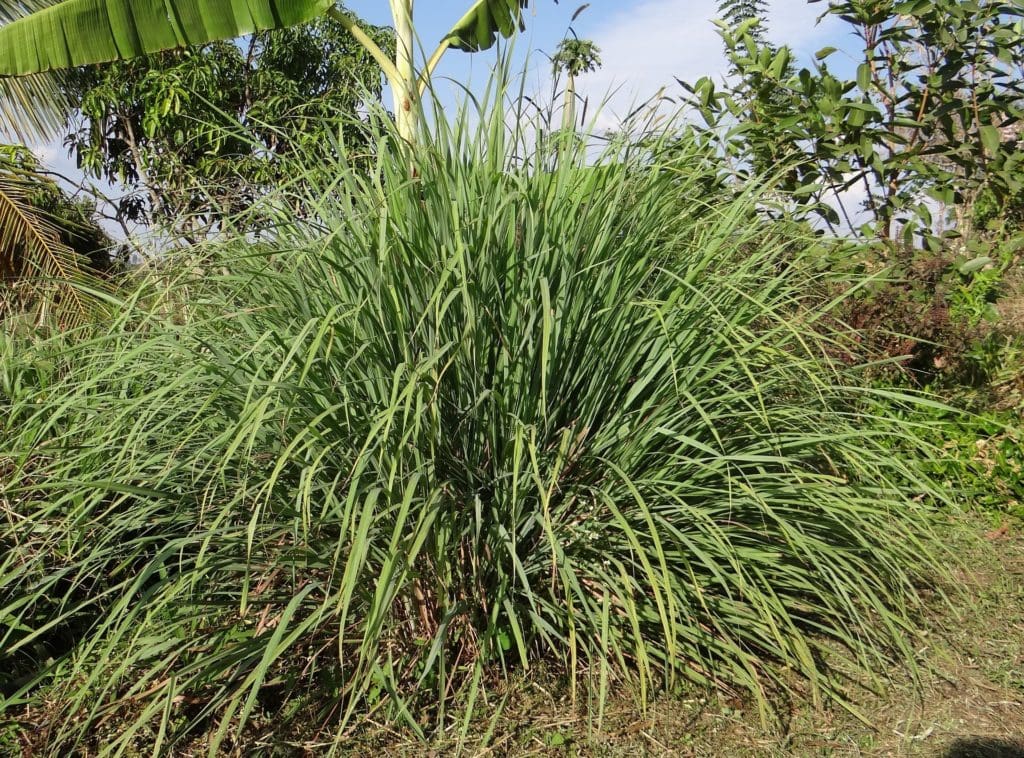How to Get Rid of Snakes: 8 Methods That Work
-

- Last updated:

Snakes are some of the scariest reptiles you may encounter in your garden. Garden snakes like settling in lawns, grasslands, and woodlands. They come into your garden looking for foods such as birds, rats, fish, small farm animals, insects, water, or shelter.
Out in nature, snakes are a critical part of the wildlife, but in your garden or home, they are pests. Getting rid of them is essential because some have venoms, eat eggs, and may also attack your pets. If you have a snake phobia, you also don’t want to encounter them in your garden unexpectedly.
This article offers practical methods on how to get rid of snakes in your garden and keep them gone. Keep reading for deeper insight into the subject.
The 8 Ways of Getting Rid of Snakes & Keeping Them Away
1. Use Snake Repellants
There are many effective snake repellants you can use to get rid of snakes in your garden. However, you should read the instructions carefully to apply the right one and ensure it doesn’t cause other adverse effects in your garden.
You can choose liquid or granular formulas. Granular formulas are easy to administer since they don’t require a lot of mixing. The good thing is that these repellants can also help eliminate other pests and rodents in your garden.
Some repellants you can use include snake repellant spray, pest rid, or Bonide products. There are also natural snake repellants such as cinnamon oil, sulfur, garlic, and vinegar.
- Start by checking the label to know the specific snake species listed and check the ingredients. Snake repellants with sulfur and naphthalene are the most effective in keeping the snakes away. Besides, check the coverage area to know the amount you require for the square footage of the area you want to apply.
- Wear gloves to ensure the repellant doesn’t get into contact with your skin. Apply the repellant over the area where you find snakes or snake signs. If you use granular repellents, scatter the granules over the areas evenly using a hand spreader.
- You can also shake the granules out of the bag or bottle. Apply the granules in bands with the width of the bands depending on the snake species you want to get rid of. For liquid repellents, read the manufacturer’s instructions, mix and distribute accordingly. Reapply as directed by the manufacturer.
- After treating the snake-infested area, apply the snake repellant in a more concentrated line around the perimeter of your garden to create a barrier that ensures the snakes don’t come back.
2. Set Traps
You can also get rid of snakes by trapping them. Some traps use glue like the one used in rodent traps. Others have a design that allows them to trap the snakes. For instance, a maze or minnow trap creates a space for the snake to enter but is impossible to get out.
Note that the traps are made to capture but not kill the snakes. So, you will need to kill the snake yourself or release it far from your garden.
- Before setting the trap, wear protective gear such as long pants and sleeves, closed-toed footwear, and gloves to protect yourself from any snake encounter. Despite that they don’t cause long-lasting harm, non-venomous snakes can injure or bite you.
- Put the snake trap in the area infested by the snake or where you have seen signs of a snake infestation. Camouflage the trap with dirt, branches, leaves, or something else that blends with it. Note that snakes don’t eat dead meat, so it’s advisable to trap them using fresh eggs, which is their delicacy.
- Check the snake trap regularly to find out if it has trapped one. Once you have trapped the snake, you should move it to a non-inhabited area at least ten miles from where you trapped it. This ensures that it doesn’t return or cause problems to others.
- To release the snake from a minnow trap or minnow, open it to allow it to leave in the opposite direction from where you stand.
- In the case of glue boards, tack several glue traps to a plywood board measuring 24 by 16 inches in size to create a glue patch of at least seven by twelve inches. Place the board in places where the snakes are likely to pass. When the snakes try to pass across the board, they get stuck. Use vegetable oil to dislodge it from a glue trap. Pour the oil onto the snake and trap to allow it to move out of the trap.
3. Get Rid of Other Rodents
Snakes feed on rodents such as moles, mice, rats, or voles. If your garden has plenty of these rodents, it becomes a great haven for snakes. Eliminating these rodents from your garden becomes a great way to keep off the snakes.
Ensure that your lawn is well maintained by mowing regularly. Control tall vegetation and bushes by cutting them. Get rid of debris such as piles of wood and rocks that offer a good habitat for mice and other rodents.
Look around for rodent burrows. These are signs that there are rodents present in your garden. Fill the burrows with gravel or dirt. Once you get rid of any potential food source for snakes, the snakes will not be attracted to your garden any more.
4. Install Snake Proof Fence

Installing a snake-proof fence is another great way to keep the reptiles away from your garden. You can install different types of fences depending on the type of snakes invading your garden and how they travel.
You can install a catch net, plastic sheeting, and steel mesh snake fencing. Regardless of the construction and design, your fence should be angled outwards and flush to the ground. This ensures the snakes don’t slither under your fence or climb over it.
Here are tips for installing a snake fence.
Dig a Deep Trench
To have an effective snake fence, you must dig a deep trench because snakes can find any small gap to go under the fence and into your garden. You should bury the fence base in a concrete barrier.
Dig a six inches deep trench of the same width and fill it with concrete and cover the fence base. The base should be one or two inches into the concrete. If you use a wooden fence, you should use pressure-treated wood or treat the wood with a sealant.
Vinyl is the best material to use for snake fencing. The vinyl surface ensures that snakes don’t climb up and into the garden. You can also slope the fence outwards to make the snake fall off as it climbs.
Remove the Gaps
A snake can slide through the smallest gaps. You need to use a vinyl fence and bury the base in a concrete layer. Make sure that the fence panels fit perfectly to the posts. Go around the snake fencing at night with a flashlight, and if the spotlight shines through, mark the space and then fill the gap.
Get Rid of External Aids
You might install a high-quality fence but still find a snake getting into your garden. If you have a tree near your snake fence, you may be giving the snakes an avenue to get into your garden. Thus, trim all the hanging branches near the fence.
Ensure you cover storm drains because snakes can use them to slip in your garden. A well-sealed vinyl fence will keep the snakes away, but you should also check external aids too.
5. Get Rid of Potential Snake Shelters
Snakes access your garden as they try to look for a good shelter. If your garden has several sources where snakes can shelter, it offers a good habitat for them. Thus, you should remove tall grass, coiled hoses, dense brush, firewood piles, and others.
Keep the grass shorter than one inch and ensure the snake fence is flush with the ground, made with plastic sheeting or steel mesh, and angled outward. The fence should also be at least four feet deep and three feet high.
Snake repellent plants such as wormwood and marigolds can also help.
6. Rear Guinea Fowls

Guinea fowls are good snake killers and will not let any of them survive in your garden. They also kill other rodents, thus saving you the time you would otherwise spend trying to eliminate them from your garden.
Since they are also very noisy, they make the snakes retreat because of the noise. Thus, they act as good snake deterrents in your garden.
7. Smoke the Snakes Out
Like most other animals, snakes have a natural instinct to run away from fire. They have a strong sense of smell, thus making them sensitive to smoke. So a fire pit may be what you require to chase them away.
Simply dig a small fire pit in the dirt and fill it with rocks or kindling. Cover the pit with leaves and moss and allow the embers to smoke for a few days at a time. Make sure you keep everyone safe from fire when using this method.
8. Alter Your Landscaping

Snakes are usually attracted to rocks, garden debris, overgrowth, and holes. Alter your landscape to repel snakes and destroy their hiding places naturally. You can keep your grass short and eliminate rock displays and large bushes.
You can also grow snake-repellent plants to keep them off. Some plants you can grow include wormwood, marigolds, and lemongrass. Try including things that are uncomfortable for snakes in the soil. For instance, you can put holly leaves, eggshells, and pine cones.
Conclusion
The above are easy methods of getting rid of snakes in your garden and keeping them away. Some include using snake repellents and traps, installing snake-proof fencing, removing shelter, or changing your landscaping.
As you perfect snake-proof landscaping, get rid of any hiding places for snakes. Most snakes will always look for dark and damp places such as holes, cracks, and crevices where they feel safe. So, make sure that all the crevices and cracks are sealed. Be wary of mulch piles and compost because snakes can also hide in them.
With the above methods, you will not worry about snakes invading your garden any more. However, ensure safety by wearing protective gear such as gloves because even non-venomous snakes can injure you.
See also:
- 12 Uses for Apple Cider Vinegar Around the House (with Pictures)
- 9 Home Invasion and Burglary Statistics (in Australia)
Featured Image Credit: TYRON PIPPIN, Unsplash
Contents

